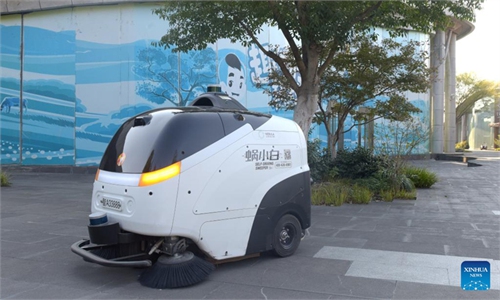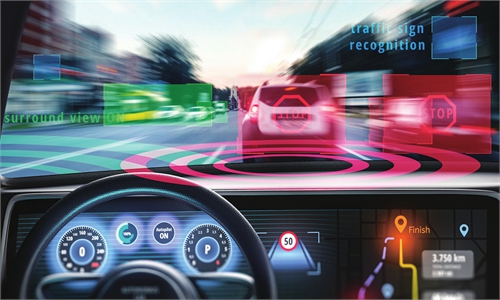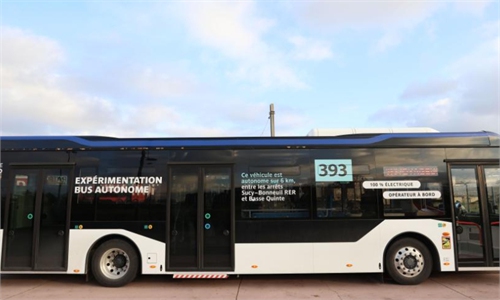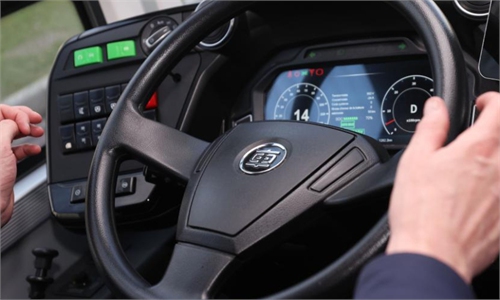Technology innovations enable smarter commute as Chinese cities eye robotaxi fleets
Self-driving cars enter ‘fast lane’
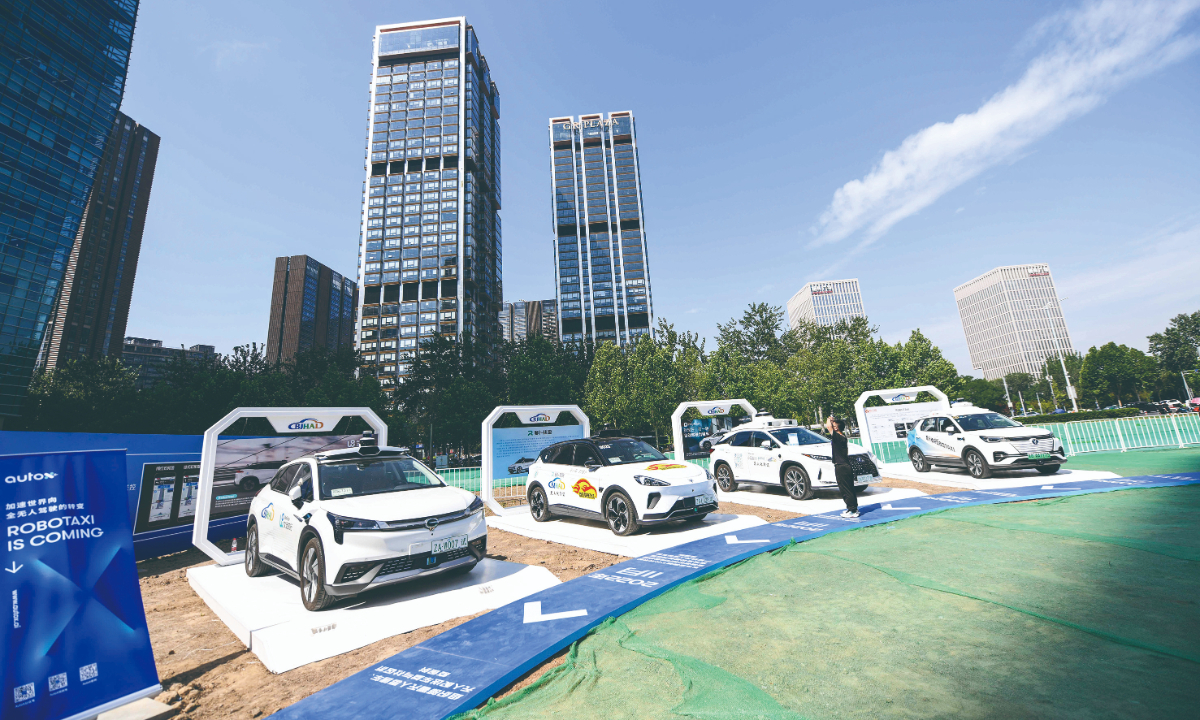
A visitor learns about new technologies and products at an autonomous driving fair in Beijing on July 7, 2023. Photo: VCG
A passenger places a ride-hailing order on the mobile phone and then a robotaxi without a driver or safety operator at the steering soon rolls up. When the passenger finishes their journey, the ride is charged automatically online... This scenario is no longer limited to the science fiction, and is being woven increasingly into everyday life.
In China, the robotaxi ride-hailing services are already being provided by several domestic companies in some selected areas of pilot cities.
During the World AI Conference held earlier this month, Shanghai's Pudong New Area issued the district's first group of licenses for the commercialization of unmanned autonomous driving in designated areas.
Companies including tech giant Baidu's Apollo, autonomous mobility start-ups Pony.ai and AutoX were among the first firms to obtain a permit to conduct the commercial road tests without a safety supervisor for a total of 15 vehicles.
Prior to Shanghai's move, Beijing, another autonomous driving pilot city, also allowed companies including Baidu and Pony.ai to commercially operate their driverless taxis and charge passengers for their rides in designated areas in its southeastern district of Yizhuang, according to the announcement of the Office of the Beijing High-Level Autonomous Driving Demonstration Zone on July 7.
There are a total of 116 self-driving cars in the pilot zone that are providing the robotaxi services. They have completed more than 1.5 million trips covering a mileage of nearly two million kilometers, data from the office showed.
Both Baidu and Pony.ai won permits to provide driverless ride-hailing services in Beijing on a trial basis in March.
Thanks to the continuous progress in regulation and technology, autonomous driving, a key area of developing the intelligent and connected vehicles (ICVs) have amassed a strong momentum during the past few years, experts said.
Domestic industrial players, who have invested heavily in the research and development of self-driving technology, are now seeing a clear path toward commercialization.
Intelligent driving
"Allowing more space for companies to test their driverless technologies and charge passengers for the taxi-hailing services marked a significant step forward for domestic self-driving vehicles manufacturing and commercialization of the business model," said Zhang Xiang, a visiting professor with the Engineering Department of Huanghe Science and Technology University.
Zhang Ning, vice president and head of L4 robotaxi at Pony.ai, told the Global Times that with the issuance of new licenses to conduct unmanned autonomous driving and charge passengers for the services, the company's robotaxi business model will likely forge a closed loop to verify the value of the cutting-edge technology.
"For enterprises, the deduction of in-car safety operators could reduce the operating costs of enterprises and create opportunities for subsequent large-scale commercial operations," Zhang Ning said.
Fully self-driving is the ultimate state for the application of autonomous driving technology. Players in this field are continuously optimizing their hardware and iterate their algorithms, Zhang Ning noted.
Currently, there are still some challenging areas for the sector including road safety issues, the lack of a complete system of technical standards, and the lack of a solution to self-driving vehicle's safety and data security, experts said.
"Technology, policy, industry chain, user's acceptance are among the core factors that affect the development of autonomous driving sector," Zhang Ning said, adding that a synergy between those factors could help propel breakthrough in the sector.
In June, China's Ministry of Industry and Information Technology said it will support the commercial application of Level 3 and higher autonomous driving technology in the country and release updated guidelines for the ICV standard system in the near future, marking a vital step in pushing forward the technology.
Official supervision
According to national standards, there are six levels of autonomous driving ranging from Level 0 to Level 5. Starting from Level 3, vehicles are considered conditionally autonomous.
Level 4 vehicles, or highly automated vehicles, refer to those that can drive completely autonomously in designated areas, a stage where domestic players have been focused on in promoting their robotaxi businesses.
"The next three years would be a crucial period for the commercialization and large-scale application of high-level autonomous driving in China," Zhang Xiang told the Global Times on Thursday.
Zhang believed that the current robotaxi services that are limited to usage in designated areas in the pilot cities will be expanded to include more cities in the next three years.
From driverless road sweepers, unmanned delivery vehicles that solve the "last mile" issue to unmanned vending machines in public spaces and driverless logistics vehicles operating at the sea ports or airports, China has taken a lead in the innovation of various scenario applications.
"Despite being a late-comer to the sector compared with the US, China has been catching up quickly during the past three years and it has built up some strength that is on par with the US, including the laser radar, which is often compared to the eyes of self-driving cars," Zhang Xiang noted.
Currently, the US and China are the leading forces of autonomous driving technology in the world.
Elon Musk, CEO of US electric vehicle giant Tesla, said the company could achieve fully autonomous driving by the latter part of this year as he believes the company is "very close to achieving full self-driving without human supervision."
A BloombergNEF's report claimed that China will operate the world's largest robotaxi fleet with some 12 million autonomous driving vehicles by 2040, to be followed by the US, with seven million vehicles.

